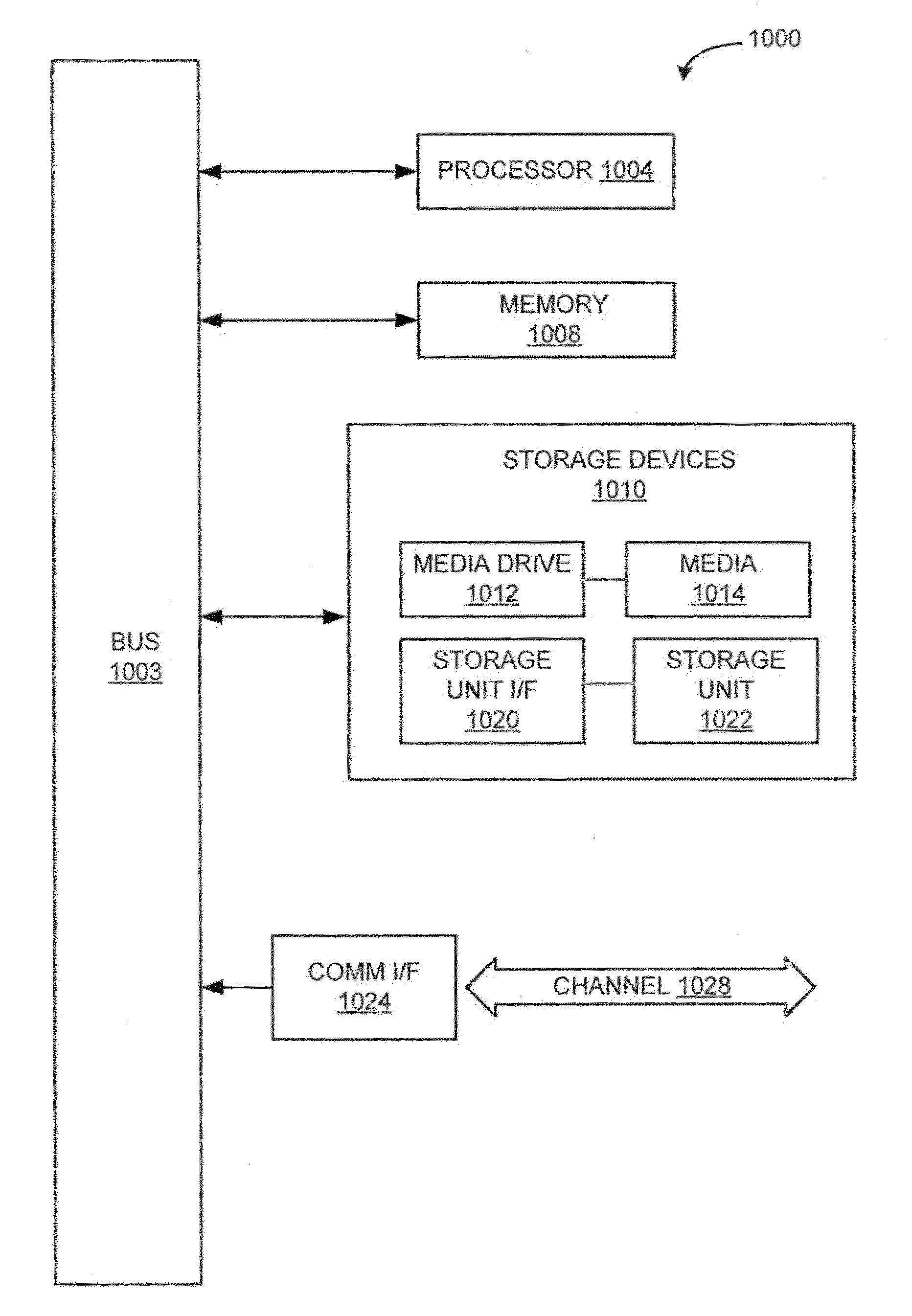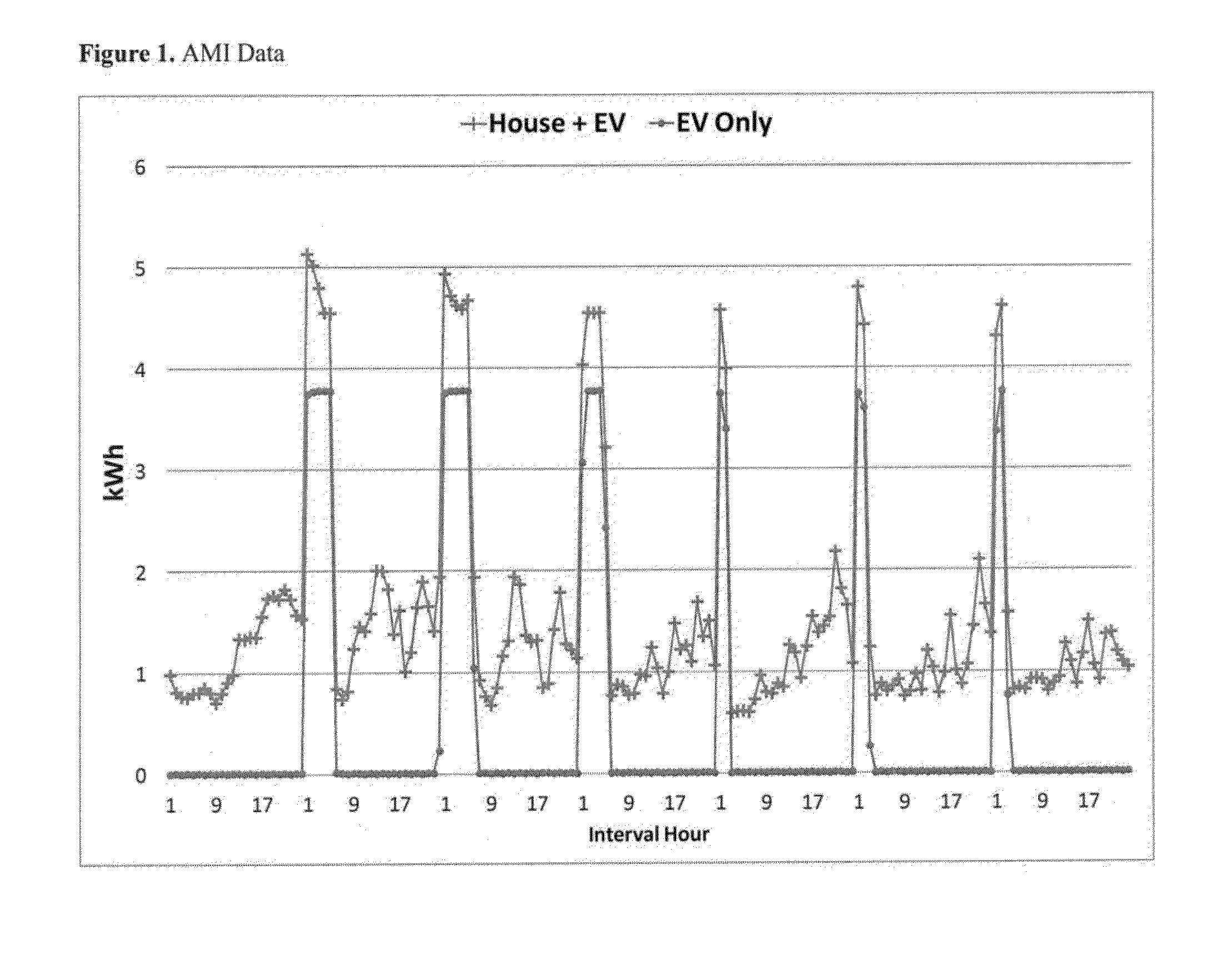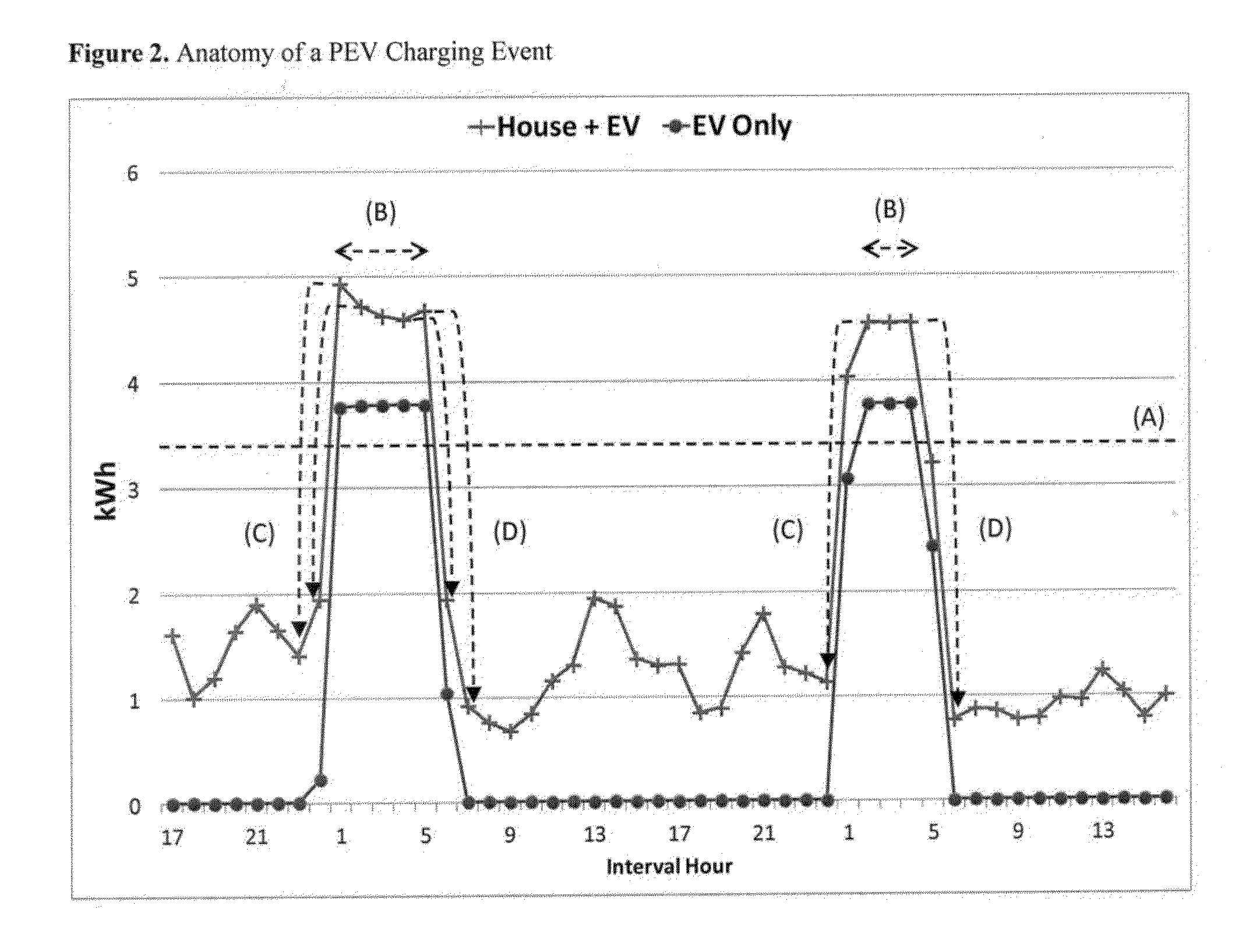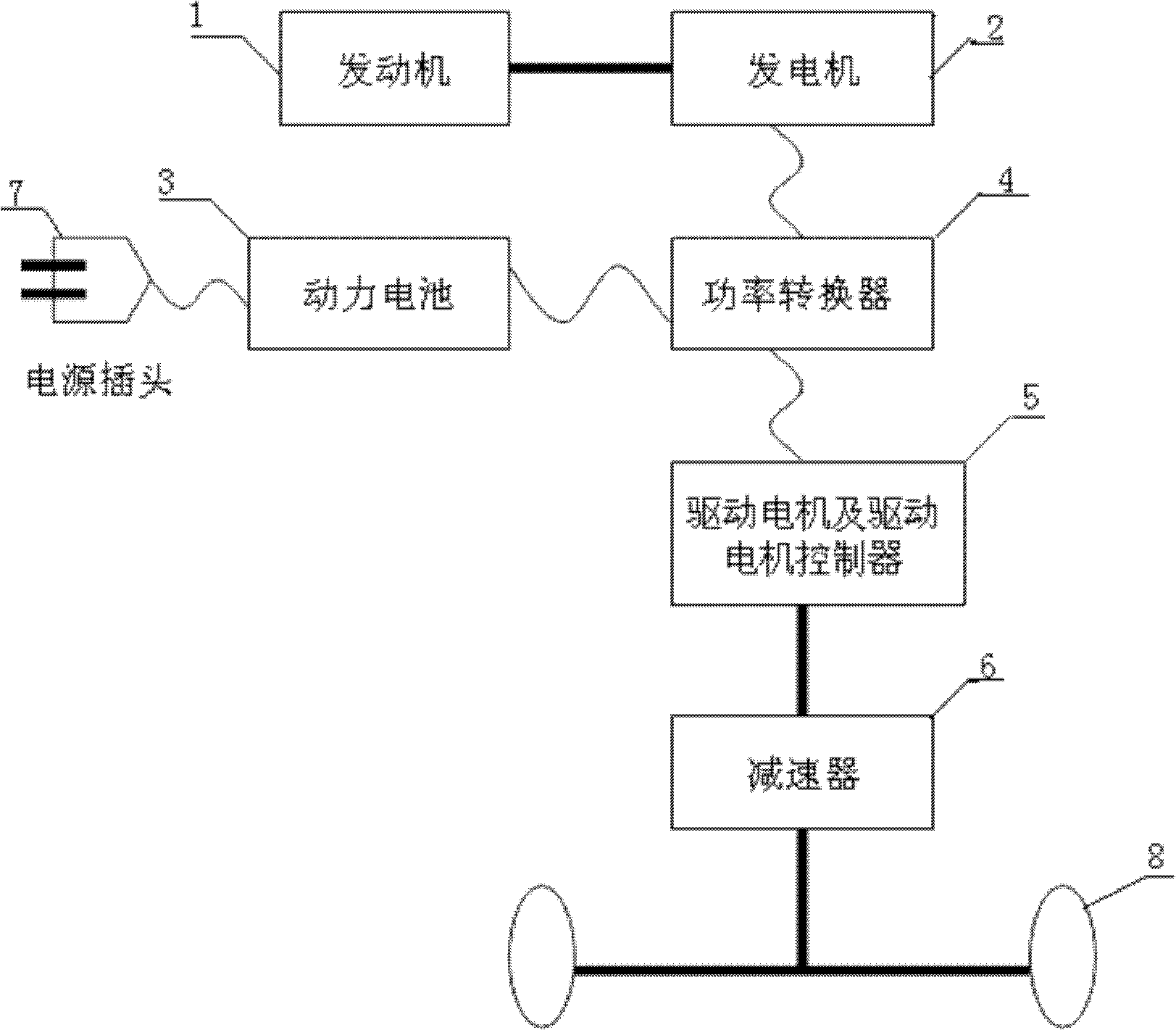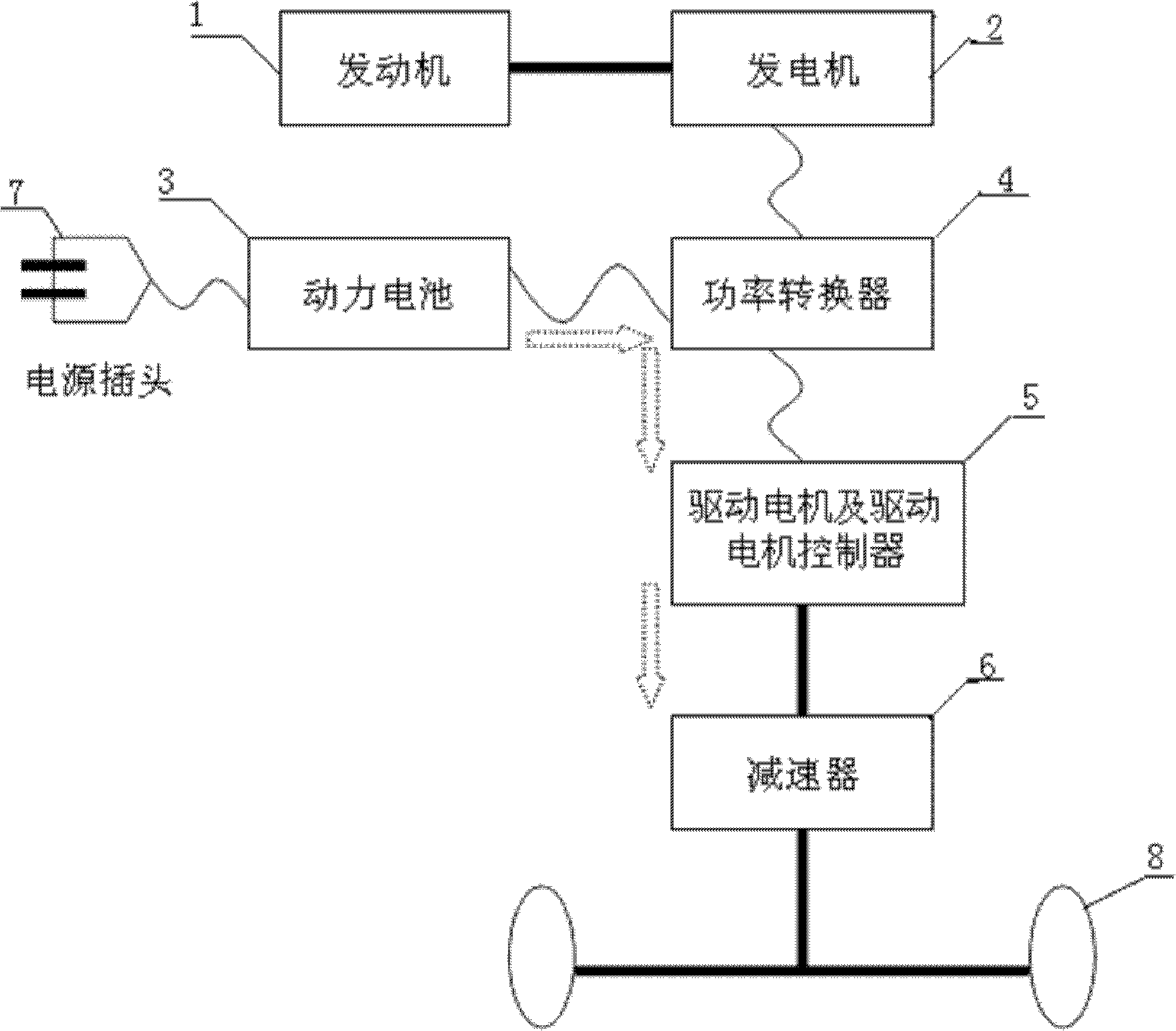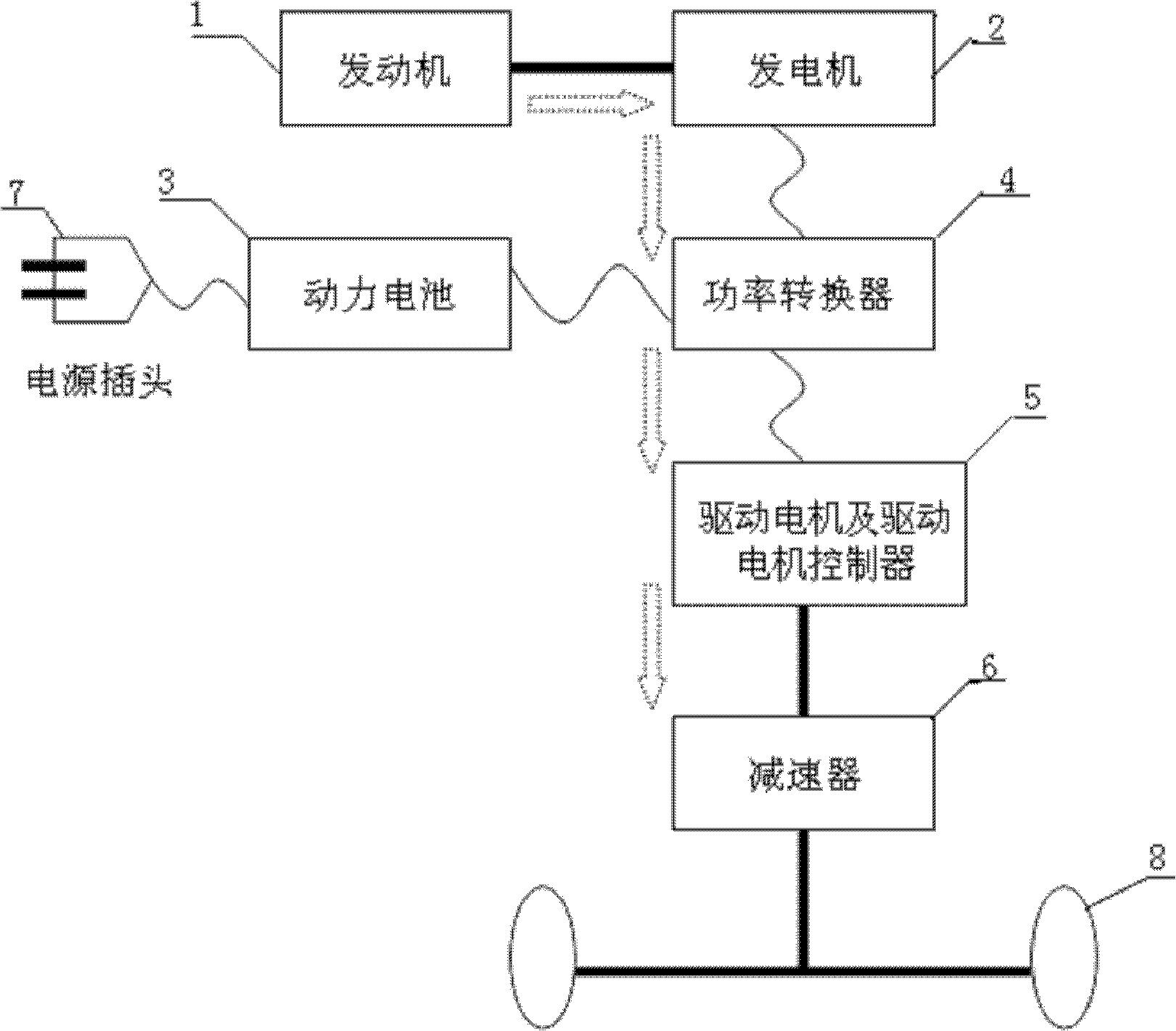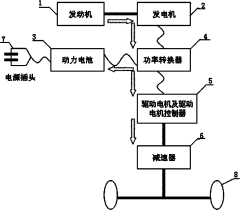How PHEV contributes to national energy independence
AUG 14, 20259 MIN READ
Generate Your Research Report Instantly with AI Agent
Patsnap Eureka helps you evaluate technical feasibility & market potential.
PHEV Technology Evolution
The evolution of Plug-in Hybrid Electric Vehicle (PHEV) technology represents a significant milestone in the automotive industry's journey towards sustainable transportation and energy independence. This technological progression can be traced through several key stages, each marked by notable advancements and innovations.
In the early 2000s, the concept of PHEVs began to gain traction as a potential solution to reduce dependence on fossil fuels. The initial PHEV designs focused on integrating larger battery packs into conventional hybrid vehicles, allowing for extended electric-only driving ranges. These early models, however, were limited by battery technology and charging infrastructure constraints.
The mid-2000s saw a surge in PHEV development, driven by advancements in lithium-ion battery technology. This period marked the introduction of more efficient and compact battery systems, enabling increased electric range without compromising vehicle design. Concurrently, power electronics and electric motor technologies improved, enhancing the overall performance and efficiency of PHEVs.
By the late 2000s and early 2010s, major automakers began introducing commercial PHEV models to the market. This phase was characterized by the refinement of powertrain integration, with a focus on optimizing the interplay between electric and combustion engines. Advanced energy management systems were developed to maximize fuel efficiency and reduce emissions.
The 2010s witnessed significant improvements in PHEV charging capabilities. The introduction of faster charging technologies and the expansion of charging infrastructure networks addressed one of the key limitations of early PHEVs. This period also saw the development of more sophisticated regenerative braking systems, further enhancing energy recovery and overall efficiency.
In recent years, PHEV technology has continued to evolve, with a focus on increasing electric range and reducing reliance on the internal combustion engine. Advanced battery chemistries, such as solid-state batteries, are being explored to improve energy density and charging speeds. Additionally, the integration of smart grid technologies and vehicle-to-grid (V2G) capabilities is positioning PHEVs as potential assets in grid stabilization and energy management.
The ongoing evolution of PHEV technology is closely aligned with the goal of enhancing national energy independence. By reducing reliance on petroleum-based fuels and leveraging domestic electricity production, PHEVs contribute to diversifying the energy mix used in transportation. This shift not only reduces vulnerability to oil price fluctuations but also promotes the utilization of locally generated renewable energy sources.
Looking ahead, the future of PHEV technology is likely to be shaped by advancements in artificial intelligence and connectivity. These technologies promise to optimize vehicle performance, predict and adapt to driving patterns, and seamlessly integrate with smart energy grids. As PHEVs continue to evolve, they are poised to play an increasingly significant role in the transition towards a more sustainable and energy-independent transportation sector.
In the early 2000s, the concept of PHEVs began to gain traction as a potential solution to reduce dependence on fossil fuels. The initial PHEV designs focused on integrating larger battery packs into conventional hybrid vehicles, allowing for extended electric-only driving ranges. These early models, however, were limited by battery technology and charging infrastructure constraints.
The mid-2000s saw a surge in PHEV development, driven by advancements in lithium-ion battery technology. This period marked the introduction of more efficient and compact battery systems, enabling increased electric range without compromising vehicle design. Concurrently, power electronics and electric motor technologies improved, enhancing the overall performance and efficiency of PHEVs.
By the late 2000s and early 2010s, major automakers began introducing commercial PHEV models to the market. This phase was characterized by the refinement of powertrain integration, with a focus on optimizing the interplay between electric and combustion engines. Advanced energy management systems were developed to maximize fuel efficiency and reduce emissions.
The 2010s witnessed significant improvements in PHEV charging capabilities. The introduction of faster charging technologies and the expansion of charging infrastructure networks addressed one of the key limitations of early PHEVs. This period also saw the development of more sophisticated regenerative braking systems, further enhancing energy recovery and overall efficiency.
In recent years, PHEV technology has continued to evolve, with a focus on increasing electric range and reducing reliance on the internal combustion engine. Advanced battery chemistries, such as solid-state batteries, are being explored to improve energy density and charging speeds. Additionally, the integration of smart grid technologies and vehicle-to-grid (V2G) capabilities is positioning PHEVs as potential assets in grid stabilization and energy management.
The ongoing evolution of PHEV technology is closely aligned with the goal of enhancing national energy independence. By reducing reliance on petroleum-based fuels and leveraging domestic electricity production, PHEVs contribute to diversifying the energy mix used in transportation. This shift not only reduces vulnerability to oil price fluctuations but also promotes the utilization of locally generated renewable energy sources.
Looking ahead, the future of PHEV technology is likely to be shaped by advancements in artificial intelligence and connectivity. These technologies promise to optimize vehicle performance, predict and adapt to driving patterns, and seamlessly integrate with smart energy grids. As PHEVs continue to evolve, they are poised to play an increasingly significant role in the transition towards a more sustainable and energy-independent transportation sector.
Energy Independence Demand
The demand for energy independence has become a critical national priority for many countries, driven by geopolitical tensions, economic considerations, and environmental concerns. This growing emphasis on reducing reliance on foreign energy sources has led to increased interest in technologies that can help achieve this goal, with Plug-in Hybrid Electric Vehicles (PHEVs) emerging as a promising solution.
PHEVs offer a unique advantage in the pursuit of energy independence by combining the benefits of both electric and conventional internal combustion engine technologies. These vehicles can operate on electricity for short to medium-range trips, significantly reducing the consumption of fossil fuels for daily commutes and local travel. This shift towards electricity as a primary energy source for transportation aligns with the broader goal of diversifying energy sources and reducing dependence on imported oil.
The market demand for PHEVs is closely tied to the national objective of energy independence. As governments implement policies to reduce fossil fuel consumption and promote cleaner energy alternatives, consumer interest in PHEVs has grown substantially. This demand is further fueled by increasing awareness of environmental issues and the desire for more sustainable transportation options.
From an economic perspective, the adoption of PHEVs contributes to energy independence by reducing the vulnerability of national economies to oil price fluctuations. By decreasing the overall demand for petroleum, countries can mitigate the impact of global oil market volatility on their economies. This reduction in oil imports can lead to improved trade balances and enhanced economic stability.
The potential market for PHEVs is significant, with projections indicating substantial growth in the coming years. This expansion is supported by advancements in battery technology, which are extending the electric range of PHEVs and making them more attractive to consumers. Additionally, the development of charging infrastructure is addressing one of the key barriers to widespread adoption, further stimulating market demand.
Industry trends suggest that PHEVs are playing an increasingly important role in the transition towards full electrification of the transportation sector. They serve as a bridge technology, allowing consumers to experience the benefits of electric driving while maintaining the flexibility of conventional vehicles for longer trips. This transitional role is crucial in building consumer confidence in electric vehicle technology and supporting the gradual shift away from fossil fuel dependence.
The demand for energy independence through PHEV adoption is also driving innovation in related sectors, such as smart grid technologies and renewable energy generation. As PHEVs become more prevalent, there is a growing need for intelligent charging systems that can balance electricity demand and supply, further enhancing the efficiency and reliability of national energy systems.
PHEVs offer a unique advantage in the pursuit of energy independence by combining the benefits of both electric and conventional internal combustion engine technologies. These vehicles can operate on electricity for short to medium-range trips, significantly reducing the consumption of fossil fuels for daily commutes and local travel. This shift towards electricity as a primary energy source for transportation aligns with the broader goal of diversifying energy sources and reducing dependence on imported oil.
The market demand for PHEVs is closely tied to the national objective of energy independence. As governments implement policies to reduce fossil fuel consumption and promote cleaner energy alternatives, consumer interest in PHEVs has grown substantially. This demand is further fueled by increasing awareness of environmental issues and the desire for more sustainable transportation options.
From an economic perspective, the adoption of PHEVs contributes to energy independence by reducing the vulnerability of national economies to oil price fluctuations. By decreasing the overall demand for petroleum, countries can mitigate the impact of global oil market volatility on their economies. This reduction in oil imports can lead to improved trade balances and enhanced economic stability.
The potential market for PHEVs is significant, with projections indicating substantial growth in the coming years. This expansion is supported by advancements in battery technology, which are extending the electric range of PHEVs and making them more attractive to consumers. Additionally, the development of charging infrastructure is addressing one of the key barriers to widespread adoption, further stimulating market demand.
Industry trends suggest that PHEVs are playing an increasingly important role in the transition towards full electrification of the transportation sector. They serve as a bridge technology, allowing consumers to experience the benefits of electric driving while maintaining the flexibility of conventional vehicles for longer trips. This transitional role is crucial in building consumer confidence in electric vehicle technology and supporting the gradual shift away from fossil fuel dependence.
The demand for energy independence through PHEV adoption is also driving innovation in related sectors, such as smart grid technologies and renewable energy generation. As PHEVs become more prevalent, there is a growing need for intelligent charging systems that can balance electricity demand and supply, further enhancing the efficiency and reliability of national energy systems.
PHEV Technical Challenges
Plug-in Hybrid Electric Vehicles (PHEVs) face several technical challenges that impact their ability to contribute effectively to national energy independence. One of the primary challenges is battery technology. Current PHEV batteries struggle with limited energy density, which restricts the all-electric range of these vehicles. This limitation means that PHEVs still rely significantly on their internal combustion engines, reducing their potential to decrease fossil fuel consumption.
Another significant challenge is the integration and management of dual powertrains. PHEVs must seamlessly switch between electric and gasoline power, requiring sophisticated control systems. These systems need to optimize power distribution, manage thermal issues, and ensure smooth transitions between power sources. The complexity of this integration increases vehicle cost and can impact reliability, potentially deterring widespread adoption.
Weight management presents another hurdle for PHEV technology. The addition of electric components, particularly the battery pack, increases the overall weight of the vehicle. This added weight can negatively affect vehicle performance, handling, and energy efficiency, partially offsetting the benefits gained from the electric powertrain.
Charging infrastructure remains a critical challenge for PHEVs. While they can operate without frequent charging, the full potential of PHEVs in reducing fossil fuel dependence is only realized when they are regularly charged. The lack of widespread, accessible charging stations, especially in residential areas and workplaces, limits the practicality of PHEVs for many consumers.
Cost is another significant barrier. The dual powertrain system and advanced battery technology make PHEVs more expensive than conventional vehicles. This higher upfront cost can deter consumers, even if the long-term operational costs are lower. Government incentives have helped mitigate this issue, but as these incentives phase out, maintaining cost competitiveness becomes more challenging.
Lastly, the environmental impact of battery production and disposal poses a challenge. While PHEVs can reduce emissions during operation, the manufacturing process of batteries, particularly the mining of rare earth elements, can have significant environmental consequences. Additionally, the end-of-life management of these batteries presents recycling and disposal challenges that need to be addressed to ensure the overall sustainability of PHEV technology.
Another significant challenge is the integration and management of dual powertrains. PHEVs must seamlessly switch between electric and gasoline power, requiring sophisticated control systems. These systems need to optimize power distribution, manage thermal issues, and ensure smooth transitions between power sources. The complexity of this integration increases vehicle cost and can impact reliability, potentially deterring widespread adoption.
Weight management presents another hurdle for PHEV technology. The addition of electric components, particularly the battery pack, increases the overall weight of the vehicle. This added weight can negatively affect vehicle performance, handling, and energy efficiency, partially offsetting the benefits gained from the electric powertrain.
Charging infrastructure remains a critical challenge for PHEVs. While they can operate without frequent charging, the full potential of PHEVs in reducing fossil fuel dependence is only realized when they are regularly charged. The lack of widespread, accessible charging stations, especially in residential areas and workplaces, limits the practicality of PHEVs for many consumers.
Cost is another significant barrier. The dual powertrain system and advanced battery technology make PHEVs more expensive than conventional vehicles. This higher upfront cost can deter consumers, even if the long-term operational costs are lower. Government incentives have helped mitigate this issue, but as these incentives phase out, maintaining cost competitiveness becomes more challenging.
Lastly, the environmental impact of battery production and disposal poses a challenge. While PHEVs can reduce emissions during operation, the manufacturing process of batteries, particularly the mining of rare earth elements, can have significant environmental consequences. Additionally, the end-of-life management of these batteries presents recycling and disposal challenges that need to be addressed to ensure the overall sustainability of PHEV technology.
Current PHEV Solutions
01 Energy management systems for PHEVs
Advanced energy management systems are developed for PHEVs to optimize the use of electric and combustion power sources. These systems aim to maximize energy efficiency, reduce fuel consumption, and increase the vehicle's overall range. They utilize intelligent algorithms to determine the most efficient power distribution between the electric motor and internal combustion engine based on driving conditions and battery state of charge.- Energy management systems for PHEVs: Advanced energy management systems are developed for PHEVs to optimize the use of electric and combustion power sources. These systems aim to maximize energy efficiency, reduce fuel consumption, and increase the vehicle's overall range. They often incorporate intelligent algorithms to predict energy needs and adjust power distribution accordingly.
- Charging infrastructure and grid integration: Innovations in charging infrastructure and grid integration focus on enhancing energy independence for PHEVs. This includes the development of smart charging stations, vehicle-to-grid (V2G) technologies, and improved battery management systems. These advancements aim to optimize charging efficiency, reduce charging times, and enable PHEVs to contribute to grid stability.
- Regenerative braking and energy recovery: PHEVs utilize advanced regenerative braking systems to recover and store energy that would otherwise be lost during deceleration. These systems convert kinetic energy into electrical energy, which is then stored in the vehicle's battery. Improvements in this technology aim to increase the amount of energy recovered and enhance overall vehicle efficiency.
- Lightweight materials and aerodynamic design: The use of lightweight materials and aerodynamic design principles in PHEV construction contributes to energy independence by reducing overall vehicle weight and improving efficiency. Advanced materials such as carbon fiber composites and high-strength alloys are employed to decrease energy consumption without compromising safety or performance.
- Solar integration and alternative energy sources: Innovative approaches to integrating solar panels and other alternative energy sources into PHEVs are being explored to enhance energy independence. These technologies aim to supplement the vehicle's power supply, extend driving range, and reduce reliance on grid charging. Some concepts include solar roofs, body panels with integrated photovoltaic cells, and the use of hydrogen fuel cells as range extenders.
02 Charging infrastructure and grid integration
Improving charging infrastructure and grid integration is crucial for PHEV energy independence. This includes developing smart charging systems, vehicle-to-grid (V2G) technologies, and renewable energy integration. These advancements enable PHEVs to charge more efficiently, potentially provide power back to the grid, and utilize clean energy sources, reducing dependence on fossil fuels.Expand Specific Solutions03 Battery technology advancements
Continuous improvements in battery technology are essential for enhancing PHEV energy independence. This includes developing batteries with higher energy density, faster charging capabilities, and longer lifespans. Advanced battery management systems and thermal management techniques are also being implemented to optimize battery performance and extend electric-only driving range.Expand Specific Solutions04 Lightweight materials and aerodynamic design
Utilizing lightweight materials and improving aerodynamic design contribute to PHEV energy independence by reducing overall vehicle weight and drag. This results in improved energy efficiency and extended electric-only range. Advanced materials such as carbon fiber composites and innovative design techniques are being employed to achieve these goals.Expand Specific Solutions05 Regenerative braking and energy recovery systems
Enhanced regenerative braking and energy recovery systems play a crucial role in improving PHEV energy independence. These systems capture and store energy typically lost during braking and deceleration, converting it back into usable electricity. Advanced algorithms and hardware improvements are being developed to maximize energy recovery efficiency and extend the electric driving range of PHEVs.Expand Specific Solutions
Key PHEV Manufacturers
The competition landscape for PHEV's contribution to national energy independence is evolving rapidly. The market is in a growth phase, with increasing adoption of PHEVs as a transitional technology between conventional and fully electric vehicles. Major automotive players like Ford, Hyundai, BMW, and Audi are investing heavily in PHEV technology, indicating its strategic importance. The market size is expanding, driven by government incentives and growing consumer awareness of environmental issues. Technologically, PHEVs are relatively mature, with companies like Johnson Controls and Cummins developing advanced powertrain and battery solutions. However, there's ongoing innovation in areas such as energy management systems and charging infrastructure, with firms like Exergonix and GlobalFoundries contributing to the ecosystem's development.
Ford Global Technologies LLC
Technical Solution: Ford's PHEV technology is exemplified by their PowerSplit architecture, which allows for both series and parallel hybrid operation. This system is used in vehicles like the Ford Escape PHEV, providing up to 37 miles of all-electric range[7]. Ford is also developing a modular hybrid transmission that can be adapted to various vehicle sizes and power requirements, enabling more efficient PHEV production across their lineup[8]. The company is investing in advanced battery management systems to extend battery life and improve overall vehicle efficiency[9].
Strengths: Versatile PowerSplit architecture; scalable hybrid transmission technology. Weaknesses: Shorter all-electric range compared to some competitors; slower adoption of PHEV technology across full product range.
Hyundai Mobis Co., Ltd.
Technical Solution: Hyundai Mobis, as a key supplier for Hyundai and Kia, has developed a modular PHEV powertrain system that can be adapted to various vehicle platforms. Their system includes a high-efficiency electric motor, power electronics, and a compact battery pack designed for easy integration[10]. The company has also invested in developing lightweight materials and aerodynamic designs specifically for PHEVs to maximize efficiency and range[11]. Hyundai Mobis is working on advanced thermal management systems for PHEV batteries, which can significantly improve battery life and performance in various climates[12].
Strengths: Modular PHEV system design for easy adaptation; focus on lightweight materials and aerodynamics. Weaknesses: Dependent on Hyundai and Kia for primary market; less experience in PHEV technology compared to some competitors.
PHEV Core Innovations
Method for detection of plug-in electric vehicle charging via interrogation of smart meter data
PatentActiveUS20120123709A1
Innovation
- An algorithm that interrogates interval consumption data using four parameters (threshold level, duration, leading edge increase, and lagging edge decrease) to identify PEV charging events, allowing for real-time monitoring and discrimination between PEV charging and other loads, and is adaptable to different vehicle types and charging behaviors.
Cost based method for optimizing external PHEV (Plug-in Hybrid Electric Vehicle) power assembly and application thereof
PatentInactiveCN102180169A
Innovation
- By establishing a cost-based optimization method, determine the variables to be optimized and construct a cost objective function equation, and use quadratic programming or matrix partitioning optimization algorithms to optimize the maximum output power of the engine, the maximum output power of the drive motor, the output power of the power battery and the capacity of the power battery pack. , to achieve the lowest cost powertrain design.
PHEV Policy Landscape
The PHEV policy landscape plays a crucial role in shaping the adoption and impact of Plug-in Hybrid Electric Vehicles (PHEVs) on national energy independence. Governments worldwide have implemented various policies to promote PHEV adoption, recognizing their potential to reduce reliance on imported fossil fuels and enhance energy security.
At the federal level, many countries have introduced financial incentives to encourage PHEV purchases. These often include tax credits, rebates, and grants that significantly reduce the upfront cost of PHEVs for consumers. For instance, the United States offers federal tax credits of up to $7,500 for eligible PHEVs, while European countries like Germany and France provide similar incentives to boost PHEV sales.
In addition to financial incentives, governments have established regulatory frameworks to support PHEV adoption. These include fuel economy standards and emissions regulations that incentivize automakers to produce more PHEVs. The Corporate Average Fuel Economy (CAFE) standards in the United States and the European Union's CO2 emissions targets are examples of such regulations that indirectly promote PHEV production and sales.
Many countries have also implemented policies to develop charging infrastructure, which is critical for PHEV adoption and utilization. These policies often involve public-private partnerships to install charging stations in urban areas, along highways, and at workplaces. Some governments offer grants or tax incentives for the installation of home charging units, further supporting PHEV owners.
At the local level, cities and municipalities have introduced their own PHEV-friendly policies. These may include preferential parking, access to high-occupancy vehicle lanes, and exemptions from congestion charges or city center access restrictions. Such policies not only incentivize PHEV ownership but also maximize their electric-only driving potential in urban areas, further reducing fossil fuel consumption.
Research and development support is another key aspect of the PHEV policy landscape. Many governments provide funding for PHEV-related research, focusing on areas such as battery technology, charging systems, and vehicle-to-grid integration. These investments aim to improve PHEV performance, reduce costs, and enhance their contribution to energy independence.
The policy landscape also includes measures to integrate PHEVs into the broader energy system. Some countries have implemented smart grid policies and time-of-use electricity pricing to encourage PHEV charging during off-peak hours, thus optimizing grid utilization and potentially increasing the use of renewable energy sources.
As the PHEV market matures, policies are evolving to address new challenges and opportunities. For instance, some countries are now considering policies to ensure that PHEVs are used in electric mode as much as possible, maximizing their benefits for energy independence. This may involve requirements for minimum electric ranges or incentives tied to actual electric miles driven.
At the federal level, many countries have introduced financial incentives to encourage PHEV purchases. These often include tax credits, rebates, and grants that significantly reduce the upfront cost of PHEVs for consumers. For instance, the United States offers federal tax credits of up to $7,500 for eligible PHEVs, while European countries like Germany and France provide similar incentives to boost PHEV sales.
In addition to financial incentives, governments have established regulatory frameworks to support PHEV adoption. These include fuel economy standards and emissions regulations that incentivize automakers to produce more PHEVs. The Corporate Average Fuel Economy (CAFE) standards in the United States and the European Union's CO2 emissions targets are examples of such regulations that indirectly promote PHEV production and sales.
Many countries have also implemented policies to develop charging infrastructure, which is critical for PHEV adoption and utilization. These policies often involve public-private partnerships to install charging stations in urban areas, along highways, and at workplaces. Some governments offer grants or tax incentives for the installation of home charging units, further supporting PHEV owners.
At the local level, cities and municipalities have introduced their own PHEV-friendly policies. These may include preferential parking, access to high-occupancy vehicle lanes, and exemptions from congestion charges or city center access restrictions. Such policies not only incentivize PHEV ownership but also maximize their electric-only driving potential in urban areas, further reducing fossil fuel consumption.
Research and development support is another key aspect of the PHEV policy landscape. Many governments provide funding for PHEV-related research, focusing on areas such as battery technology, charging systems, and vehicle-to-grid integration. These investments aim to improve PHEV performance, reduce costs, and enhance their contribution to energy independence.
The policy landscape also includes measures to integrate PHEVs into the broader energy system. Some countries have implemented smart grid policies and time-of-use electricity pricing to encourage PHEV charging during off-peak hours, thus optimizing grid utilization and potentially increasing the use of renewable energy sources.
As the PHEV market matures, policies are evolving to address new challenges and opportunities. For instance, some countries are now considering policies to ensure that PHEVs are used in electric mode as much as possible, maximizing their benefits for energy independence. This may involve requirements for minimum electric ranges or incentives tied to actual electric miles driven.
PHEV Economic Impact
Plug-in Hybrid Electric Vehicles (PHEVs) have a significant economic impact that contributes to national energy independence. These vehicles combine the benefits of electric and conventional powertrains, offering a unique solution to reduce reliance on imported fossil fuels while supporting domestic energy production.
The adoption of PHEVs leads to a decrease in oil imports, which positively affects the national trade balance. As more consumers switch to PHEVs, the demand for gasoline decreases, resulting in lower oil import costs. This shift in energy consumption patterns helps to insulate the economy from volatile global oil prices and reduces the country's vulnerability to supply disruptions.
PHEVs also stimulate domestic energy production by increasing demand for electricity. This demand can be met through various sources, including renewable energy like solar and wind power, as well as domestic natural gas and coal. The diversification of energy sources enhances energy security and reduces dependence on foreign oil-producing nations.
The PHEV industry creates new job opportunities across various sectors. Manufacturing PHEVs requires skilled workers in automotive engineering, battery technology, and electronics. Additionally, the development and maintenance of charging infrastructure create jobs in construction, electrical engineering, and software development. These employment opportunities contribute to economic growth and technological advancement.
Investment in PHEV technology and infrastructure also drives innovation and research and development activities. This leads to technological spillovers that benefit other industries, such as grid management, energy storage, and advanced materials. The resulting innovations can enhance overall economic competitiveness and create new export opportunities for domestic companies.
PHEVs contribute to reduced fuel costs for consumers, leading to increased disposable income. This additional spending power can stimulate economic activity in other sectors of the economy. Moreover, the lower operating costs of PHEVs compared to conventional vehicles can result in long-term savings for businesses and government fleets, improving overall economic efficiency.
The transition to PHEVs also has implications for government revenues and expenditures. While there may be a decrease in fuel tax revenues, this can be offset by new revenue streams from electricity sales and potential carbon pricing mechanisms. Additionally, reduced healthcare costs associated with improved air quality from lower emissions can lead to long-term savings in public health expenditures.
In conclusion, the economic impact of PHEVs extends beyond the automotive sector, influencing energy production, employment, innovation, and public finances. By reducing dependence on imported oil and fostering domestic energy production, PHEVs play a crucial role in enhancing national energy independence and economic resilience.
The adoption of PHEVs leads to a decrease in oil imports, which positively affects the national trade balance. As more consumers switch to PHEVs, the demand for gasoline decreases, resulting in lower oil import costs. This shift in energy consumption patterns helps to insulate the economy from volatile global oil prices and reduces the country's vulnerability to supply disruptions.
PHEVs also stimulate domestic energy production by increasing demand for electricity. This demand can be met through various sources, including renewable energy like solar and wind power, as well as domestic natural gas and coal. The diversification of energy sources enhances energy security and reduces dependence on foreign oil-producing nations.
The PHEV industry creates new job opportunities across various sectors. Manufacturing PHEVs requires skilled workers in automotive engineering, battery technology, and electronics. Additionally, the development and maintenance of charging infrastructure create jobs in construction, electrical engineering, and software development. These employment opportunities contribute to economic growth and technological advancement.
Investment in PHEV technology and infrastructure also drives innovation and research and development activities. This leads to technological spillovers that benefit other industries, such as grid management, energy storage, and advanced materials. The resulting innovations can enhance overall economic competitiveness and create new export opportunities for domestic companies.
PHEVs contribute to reduced fuel costs for consumers, leading to increased disposable income. This additional spending power can stimulate economic activity in other sectors of the economy. Moreover, the lower operating costs of PHEVs compared to conventional vehicles can result in long-term savings for businesses and government fleets, improving overall economic efficiency.
The transition to PHEVs also has implications for government revenues and expenditures. While there may be a decrease in fuel tax revenues, this can be offset by new revenue streams from electricity sales and potential carbon pricing mechanisms. Additionally, reduced healthcare costs associated with improved air quality from lower emissions can lead to long-term savings in public health expenditures.
In conclusion, the economic impact of PHEVs extends beyond the automotive sector, influencing energy production, employment, innovation, and public finances. By reducing dependence on imported oil and fostering domestic energy production, PHEVs play a crucial role in enhancing national energy independence and economic resilience.
Unlock deeper insights with Patsnap Eureka Quick Research — get a full tech report to explore trends and direct your research. Try now!
Generate Your Research Report Instantly with AI Agent
Supercharge your innovation with Patsnap Eureka AI Agent Platform!
